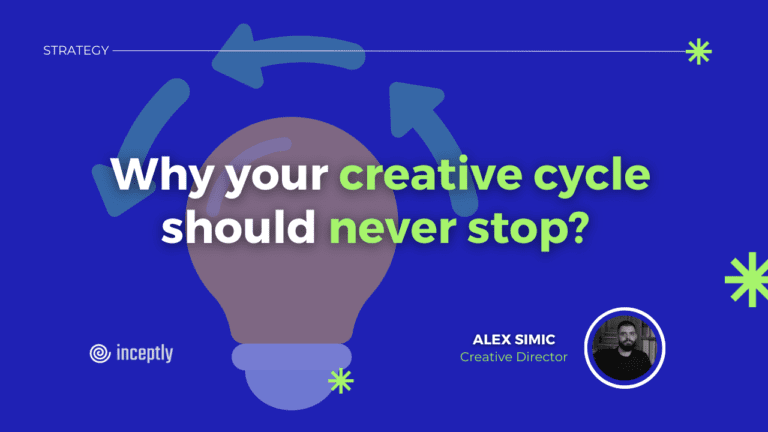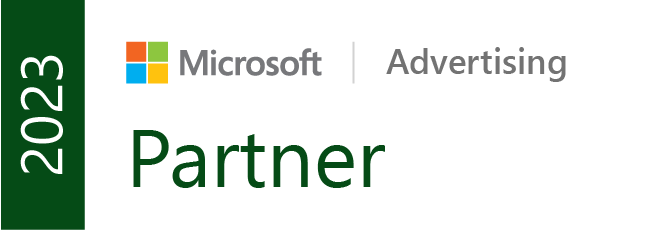
A tale as old as time: A new offer is starting to be successful, and some videos are being tested on YouTube. They pour (tens of) thousands of dollars into producing a handful of high-quality video ads. The initial results are encouraging – the numbers are there. Gassed up because of the early success, they push more budget into these same ads, convinced they’ve struck gold and that they’re ‘safe’. Everything’s going amazing. Scaling to the moon is the key after all, right?
Fast forward a few months. Boom. Even though YouTube ads maintain the performance well, this scenario isn’t unique. We’ve seen it play out again and again. I’ve done countless creative audits for clients all across the board, and almost all of them who have spent a lot but haven’t found success have the same issue – they’ve spent thousands or even tens of thousands on a small number of creatives. And that’s not the way to do it. It’s not rocket science, but still, let’s dig deeper.
Want to brainstorm with our team on new ways to scale your business with YouTube Ads (and other performance video platforms)?
Join us for a free YouTube ad brainstorming session👇
The root of the problem
The issue stems from a fundamental misunderstanding of how YouTube’s advertising (and Direct Response advertising for that matter) ecosystem operates. Additionally, there’s a lack of understanding of the elements that will make an actual impact on the ad performance.
The real cost of no proper testing strategy
The consequences of creative stagnation extend far beyond just poor ad performance:
• Wasted budget: Continuing to pour money into underperforming ads is like trying to fill a leaky bucket.
• Missed opportunities: Every stagnant ad represents a missed chance to test new messages, visuals, or offers that could resonate more strongly with your audience.
• Data drought: Without new creatives to test, you’re starving yourself of valuable data that could inform not just your ad strategy, but your broader marketing efforts.
Luckily, the way YouTube and other social media platforms are created has changed what the accent should be when creating ads. And, as you all very well know:
The first 5 seconds of your ad are crucial. This is where you either hook your audience or lose them. The beauty of this reality is that it opens up cost-effective opportunities for creative iteration. Instead of producing entirely new ads each time, focus on creating multiple variations of your intro or hook. This approach allows you to:
1. Test different attention-grabbing techniques
2. Experiment with various messaging angles
3. Maximize your creative output while minimizing production costs
By concentrating your efforts on these critical first seconds, you can dramatically increase your chances of capturing viewer interest while still being efficient. This strategy also allows for rapid testing and iteration, enabling you to quickly identify what resonates with your audience and scale accordingly.
The Inceptly strategy
For that reason, at Inceptly, we’ve focused on the approach to ad creation that is based on the Hook + Core system. This allows us to produce a high volume of creative variations while keeping costs manageable. Here’s how it works:
1. Hook creation: We focus on developing multiple hook variations – these are the crucial first 5-30 seconds of the ad that capture the viewer’s attention.
2. Core content: We create a versatile ‘core’ section of the ad that contains the main message, product demonstration, and call-to-action.
3. Mix and match: By combining different hooks with the core content, we can create numerous ad variations without the need to produce entirely new videos each time.
This system allows us to:
• Rapidly test different attention-grabbing pattern interrupts/hooks
• Maintain consistency in the main message across variations
• Produce a high volume of ads at a fraction of the cost of traditional methods
The Hook + Core system is particularly effective because it aligns with how viewers interact with YouTube ads. Most viewers decide whether to continue watching or skip within the first few seconds, making the hook the most critical element to test and optimize. Let’s be clear – this is not our opinion or something we THINK works, it’s something that we’ve tested countless times with our clients, and it’s also evident that the industry leaders are following a similar pattern as seen on our YouTube Ad Library and Spytool – VidTao.
The brands that have achieved the greatest success on YouTube often have massive creative outputs. However, it’s important to note that typically, only a small percentage of these creatives actually scale to significant success.
Proper creative testing is, therefore, absolutely essential.
This observation highlights two key points:
1. Volume is crucial: Successful brands aren’t afraid to produce a large number of creatives. They understand that not every ad will be a winner, but each one provides valuable data and learnings.
2. Testing is non-negotiable: With only a few creatives typically scaling, it’s clear that without extensive testing, it would be nearly impossible to identify these top performers.
If that hasn’t convinced you, the list of arguments for why testing is important is endless. Let me give you 5 more:
1. Data-driven decision-making: Creative tests provide concrete data on what works and what doesn’t, allowing you to make informed decisions rather than relying on gut feelings or assumptions.
2. Audience insights: Through testing, you gain valuable insights into your audience’s preferences, pain points, and motivations, which can inform not just your ad strategy, but your overall marketing approach.
3. Continuous improvement: Regular testing creates a cycle of continuous improvement, ensuring your ads stay fresh and effective over time.
4. Risk mitigation: By testing multiple creative approaches, you spread your risk, reducing the chances of a single failed campaign derailing your entire advertising strategy.
5. Competitive edge: Brands that consistently test and optimize their creatives are more likely to stay ahead of competitors who rely on static approaches.
However, these insights also shed light on another significant issue in the industry. Many smaller brands or newcomers to YouTube advertising create a handful of ads, and when they don’t see immediate success, they give up. They think – “I’ve wasted time and energy into creating 10 ads, and it hasn’t worked. That’s it!”
This approach is fundamentally flawed.
The truth is that success on YouTube often requires persistence and a willingness to iterate and be persistent. Instead of viewing initial underperformance as a failure, it should be seen as a valuable learning opportunity. Each ad that doesn’t perform as expected provides data that can inform your next creative decision.
But when you’re just pushing out creatives, that is hard. How will you ever be able to guess why a certain ad has or hasn’t performed well? Do you even know what your creative elements are?
By implementing a structured approach to your creative process, you transform each test from a shot in the dark into a controlled experiment. Your creative strategy acts as a roadmap, guiding you in systematically introducing changes to your ads – whether it’s tweaking the messaging, altering video elements, or selecting different UGC creators.
This methodical approach allows you to isolate variables and understand precisely why certain ads perform well while others fall short. It’s the difference between randomly trying ingredients and following a recipe with deliberate variations. With a solid creative strategy in place, each test becomes a valuable data point in your ongoing quest to optimize performance. You’re not just creating ads; you’re conducting experiments that yield actionable insights, driving continuous improvement in your YouTube advertising efforts.
For example, our creative strategy at Inceptly is deeply rooted in Eugene Schwartz’s stages of awareness. This framework helps us tailor our ad content to where our audience is in their customer’s journey.

By creating ads that speak to elements of these awareness levels, we ensure that we’re addressing the audience’s needs at every stage of their journey.
This way, we know what we’re testing messaging-wise when it comes to each and every single hook/intro or full creative. On top of that, it’s a bit easier to keep track of visual or UGC variations. However, all of that has to be in your head when you are conducting a test. Then, when you get the data from these tests, you have a better idea as to what has moved the needle.
And all of a sudden, you’re removing the guesswork from the process usually plagued with assumptions and biases.
Success in YouTube advertising isn’t about finding a single perfect ad and riding it to glory. It’s about embracing a mindset of continuous testing, learning, and improvement. By implementing a robust creative testing process, you’re not just optimizing for today’s performance – you’re building a sustainable system that can adapt to whatever changes the future may bring.
Remember, every “failed” test is actually a success in disguise – it’s data that guides you closer to what truly resonates with your audience. With patience, persistence, and a data-driven approach, you can unlock the full potential of YouTube advertising for your brand. You just have to know where to look.
That’s what has always made us the most proud of our work, knowing that even a failed test isn’t a failure, but a new lesson, and not an expensive one.
Want to brainstorm with our team on new ways to scale your business with YouTube Ads (and other performance video platforms)?
Join us for a free YouTube ad brainstorming session👇
Want more content like this?
Don’t miss out on the latest news and updates from the world of Direct Response advertising! Subscribe to our newsletter today 👇

Alex Simic, Creative Director
Alex Simic is the person responsible for all creative work that stands behind Inceptly since stepping into his role in 2022. He comes from the role of the Media Buying Team Lead and Strategist behind some of Inceptly’s biggest successes. He has collaborated with the biggest names in the Direct Response industry, whether as a Senior Account Manager & Media Buyer or Creative Director. His main goal is bridging the gap between Media Buying and Creative, ensuring that the videos Inceptly produces are data-based and giving our clients the best chance at achieving success.
Like this post? Let's continue the conversation!
Get in touch with us by shooting us a quick email or tagging us on LinkedIn or Instagram, and sharing your thoughts. Your feedback helps us keep our blog relevant and interesting.
Get Our Newsletter
Need Help?
Get in touch with us for an insightful evaluation of your ads + actionable tips to help amp up your direct response revenue



